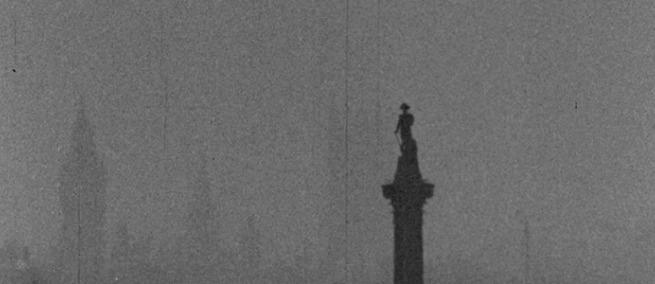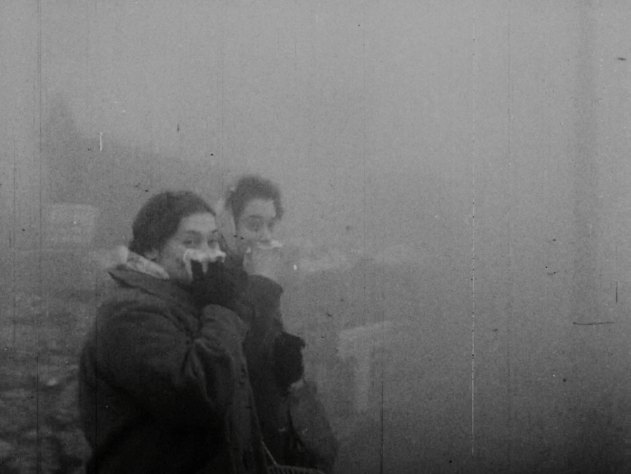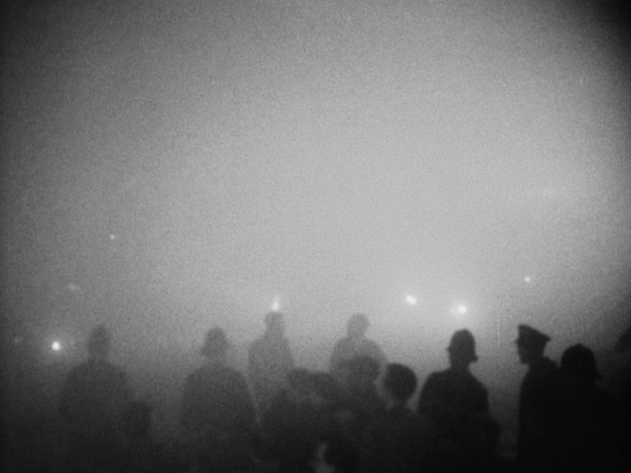
THE VEILED CITY, a 13-minute film that made its world premiere in the Berlinale Shorts Competition in 2023, is composed of archival footage from London’s Great Smog of 1952 and other climate catastrophes. It is framed through a speculative lens, as if a society 250 years in the future were looking back. The filmmaker, Natalie Cubides-Brady, spoke with us after the festival from her home in London about working with the archive and the continued relevance of the film.
Science & Film: Can you talk about the source material and how you approached making THE VEILED CITY out of an archive?
Natalie Cubides-Brady: It’s the first time I’ve made an archive film, but I’ve been interested in doing so for a long time. It feels like in documentary there is a resurgence of interest in archives and reappraising the archive’s material, so it’s been in the back of my mind for ages that I would like to find something to make an archive film about. Then, in one of those online wormholes you get into, I started looking up the Great Smog. I knew about it as an event, but I hadn’t seen that much imagery from it. I came across a series of photographs taken during the smog and I just thought they were incredibly beautiful, atmospheric images of London, but there is a horror to the images too—they’re beguiling and paradoxical and complex. They draw you in and present this romantic view of London, but if you realize it’s a deadly, poisonous smog, the images have a completely different quality to them. I had the idea almost immediately that this could be interesting to make a film about. I thought some of the images could be almost from a future disaster, so that was the reason behind the sci-fi lens. I thought it would be interesting to create a link between the climate crisis of today and what happened in 1952. The 1952 smog was the most deadly, but there had been preceding smogs, which had been captured on film, so there was enough material.

Courtesy of the filmmaker
S&F: How didactic did you want to be in the way you present those images in the film?
N C-B: I wanted to try not to be too didactic. The fictional documentary creates a space to explore more poetic aspects of a historical event without having to rehash the established arguments and discourses we already know about. I knew about the Great Smog. When I was doing the research, I watched a lot of bad documentaries that show the same footage, but it doesn’t have the same power. I felt like the images were being underused and have another potential—there is another way into that event, making us reflect on it from the context of today.
If you’re vaguely familiar with images they lose a certain potency, so it’s about how to reinject that power into them. I thought this kind of fictional documentary device would be a way of doing that without being too didactic. In the edit, we were trying to balance how to give enough factual context but not too much so it felt too didactic. There were some shots we took out. For example, a lot of cattle died in the livestock markets during the smog; there were images of dead cows at Smithfield Market, but it felt like one bit of literal information too much. It was balancing how much fact and how much poetic realism to include.
S&F: Is there something you felt you wanted this film to speak to, even if not didactically? Climate change, industrialization, air quality...
N C-B: What was interesting for me is, when I started digging into the smog, it was really obvious that industrialization and capitalism are actually at the roots of it. I suppose I was hoping people would kind of reach that conclusion. I was surprised that there are writings from, I think, 1660s as the earliest piece of writing about smogs and fogs in London. And then in the 19th century, there's lots of environmental writing about it, by these kinds of marginal... like Ruskin is a big person who writes about air pollution in London. I was interested in these voices that aren't that well known today, in terms of actually having called out this potential environmental damage that industrialization was creating.
The smog is something that is always present, but invisible until a moment of crisis. I feel that's what we're all coming to realize with the climate crisis–there are fires and all these different floods, these crisis events, but actually, they're just highlighting something that's always there in the background. I was hoping [the film] would make us think about the world today and the fact that there could be the equivalent of a deadly smog. It's these crisis moments that make you reappraise your behavior, but actually, all the activity that's contributing to [those moments] is always there.

Courtesy of the filmmaker
S&F: What are your plans for the film from here?
N C-B: I'm sending it in to festivals, I'm hoping it will screen in North America in autumn or something. And I would love it to screen in London, obviously. It wasn't ready for the festival last year. Air pollution is still a live issue in lots of cities around the world. It's very much a topic of conversation in London at the moment, and there are lots of government schemes to try and bring down air pollution because air pollution is still really bad in London. Asthma is a big problem amongst children in London. It's also inspired by city symphonies, so I feel like it has a kind of natural home in big cities.
♦
TOPICS